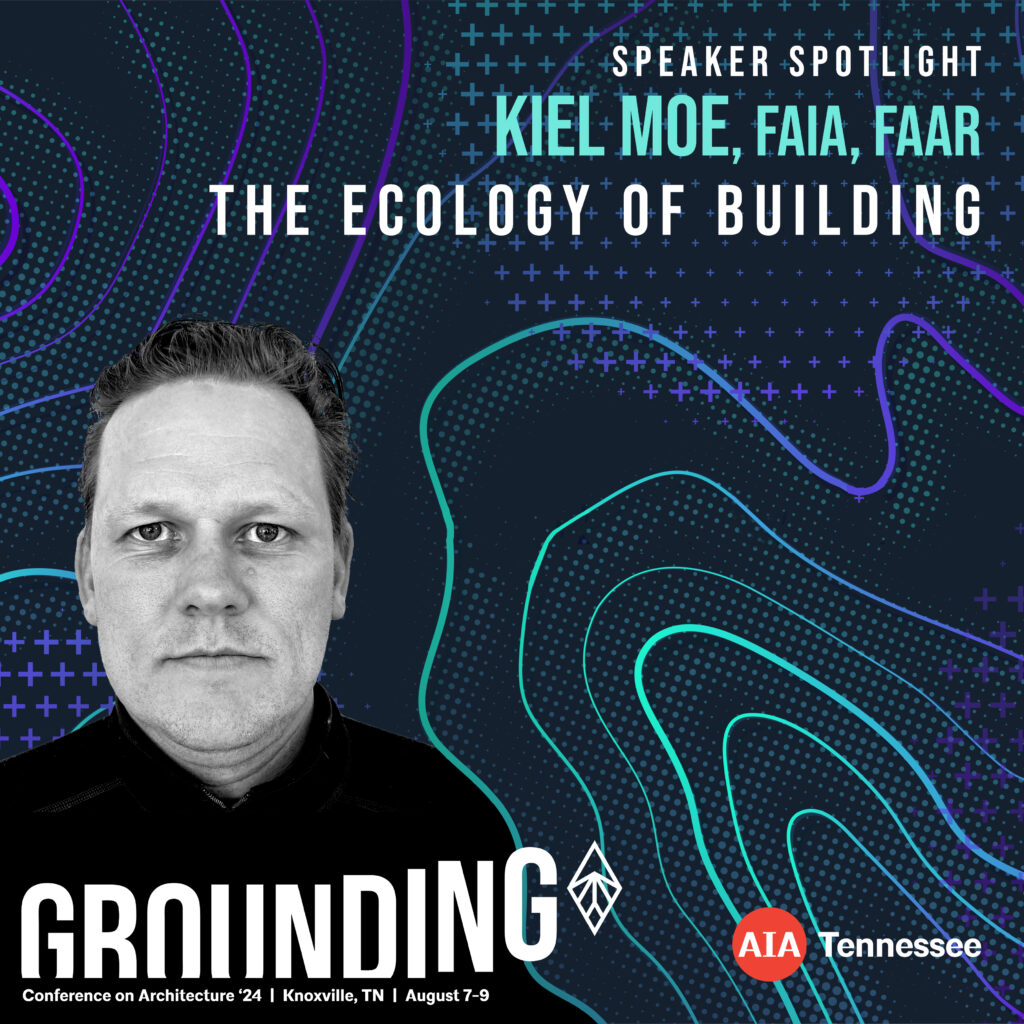Speaker Spotlight: Kiel Moe, FAIA, FAAR
2024 AIA Tennessee Conference Speaker

Kiel Moe is a practicing architect, builder, and graduate student in forest ecology. With his expertise in mass timber, he has recently helped Auburn University launch a timber research center and contributed to Rural Studio projects implementing the research on timber building systems. He has also taught at Harvard Graduate School of Design, McGill University, University of Illinois at Chicago, Northeastern University, and Syracuse University.
Kiel’s lecture will cover the full construction ecology of building and its implications for architects and will focus on the construction ecology of the Seagram Building in Midtown Manhattan, a topic published in his recent book UNLESS: The Seagram Building Construction. His research and publications help re-describe building as a terrestrial ecology–the total material, energetic, and labor involved in the designed reorganization of this planet.
In total, Kiel has published nine books including Empire, State & Building; Wood Urbanism: From the Molecular to the Territorial; Insulating Modernism; and Convergence: An Architectural Agenda for Energy.
Learn more about Kiel in our Q&A below.

What keeps you grounded in your personal or professional life?
I left schools of architecture to become more grounded in a rural forest community in Vermont. I am also a graduate student in forest ecology, which is key to grounding my forest-first, land-based architecture and building practice in that community. Living and working with a specific community, within a specific ecology, over many years is key.
Tell us more about your roots. How much of that inspires your design process and work and makes you the person you are today?
I learned most of what motivates how I practice design and building from whitewater kayaking. The relationship between matter, energetics, forms, and context are most consonant in certain flow experiences and thus kayaking is my best model for what design could be doing in this world.

There seems to be more awareness of the environmental impact of design. What have you seen or learned that makes that impact more crucial for you as a designer and architect?
It is not my perception that there is more public, or professional, awareness about the environmental impact of design. I think there has been some effort, among some designers, to make building less bad. But we should not confuse that with doing good, or being aware of the impact of design. The impacts are far greater, and much less studied, than commonly assumed.

Would you share some advice to younger architects or those new to architecture about the profession and the design process?
Our climates are changing faster than our schools and profession of architecture. The most important thing you will design in your career is an alternative set of practices for your passions and motivations that might be largely unrecognizable to your teachers and mentors.
“Find a frontline, find a community, get to work.”
Photography Credits
Images courtesy of Kiel Moe
Find out more about Gabriela and the AIA Tennessee Conference in the links below.
